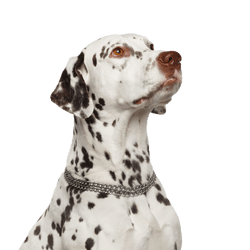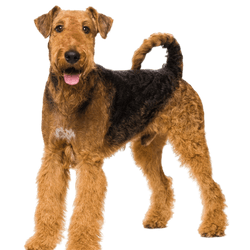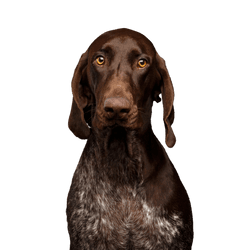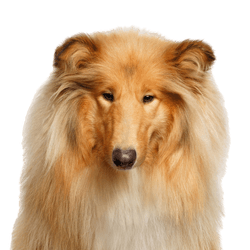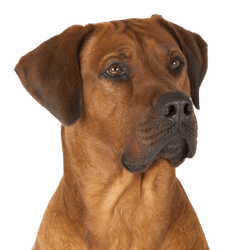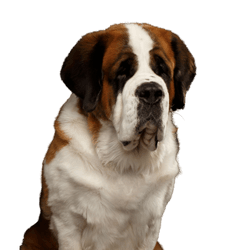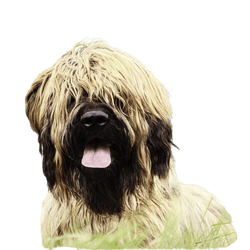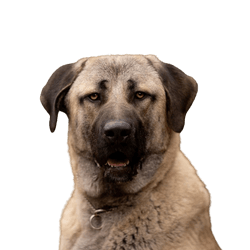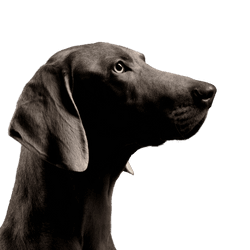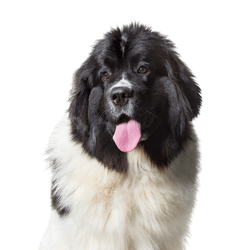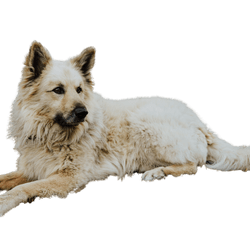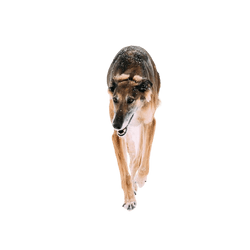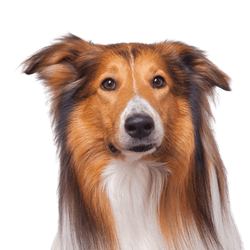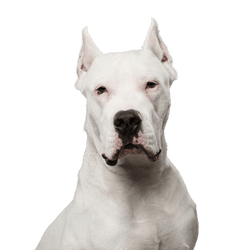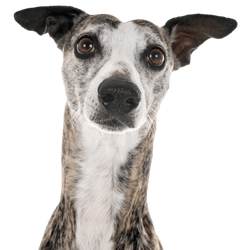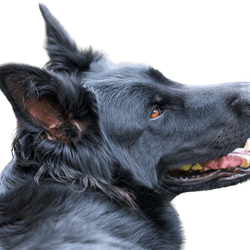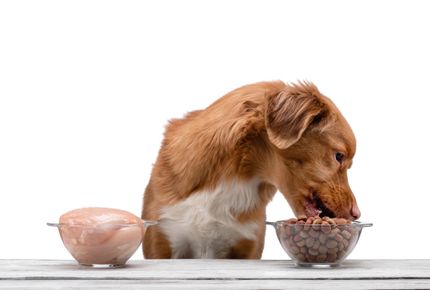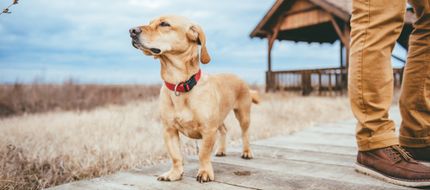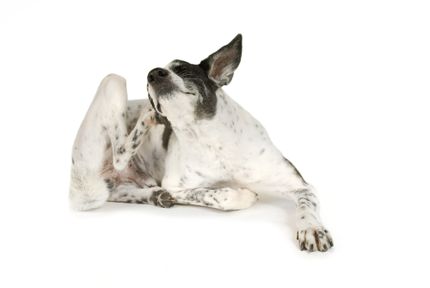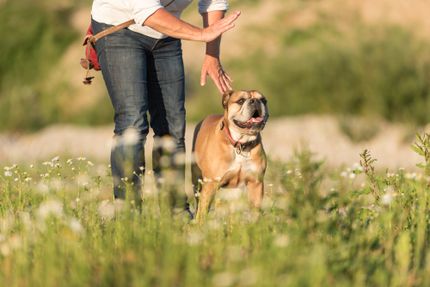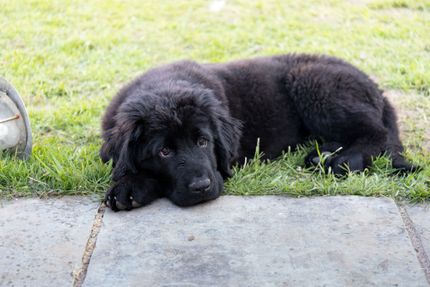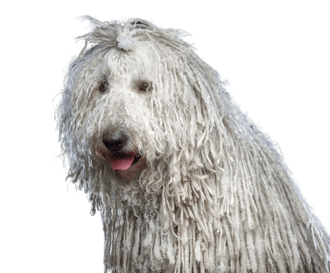
Komondor Breed description: Character & Co
Komondor
Facts & Origin
What is the origin of a Komondor?
The origin of the imposing Komondors with the incomparable shaggy coat is estimated to be around the time of Christ's birth. In the historical city of Ur, clay tablets were found that depicted cattle together with shaggy-haired dogs. A cuneiform script with "KU-MUND-UR" adorned these tablets. They are said to have come to Hungary only in the 9th century and from traditions we know that they were called Hungarian shepherd dogs for the first time in 1544. Quickly the Komondor got also in Asia and Turkey the name "king of the shepherd dogs", because he stood by the nomadic shepherds as an indispensable and reliable helper. It was able to protect large herds and whole homesteads including the family effectively from predatory cats, wolves and coyotes. Its special coat developed due to the extreme climate on the Asian continent. Thus it could endure temperatures from -30 degrees Celsius to +30 degrees Celsius without any problems. In addition, the coat protected against bites when scaring away wild animals. When the wandering shepherds became rarer, it came into the cities and increasingly into lovers' hands.
What are the breed characteristics of a Komondor?
The powerfully built and tall Komondor inspires awe and sometimes fear in some observers. It is not ingratiating because of its dignified bearing and outward appearance. Its breed characteristics are listed by the FCI under group 1 in section 1.
Things to know about the Komondor
The Komondor is more than just a big shaggy monster, because in the end you are the proud owner of a noble dog, whose ancestors already lived in the castle of Kaiser Wilhelm II and in the house of Thurn und Taxis.

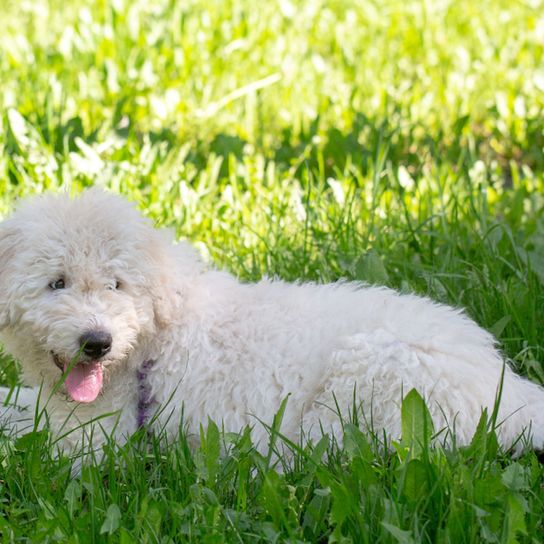
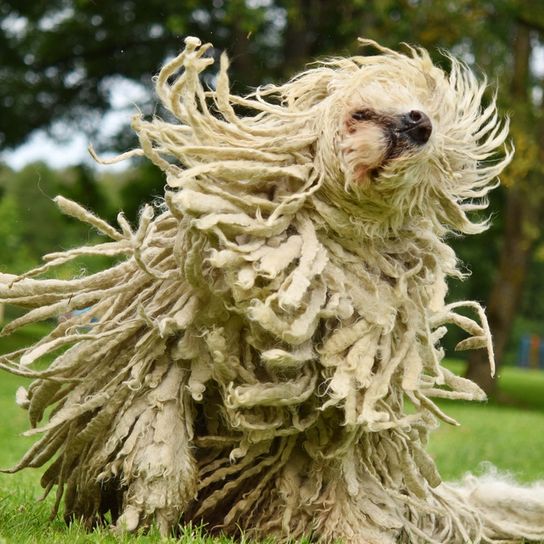
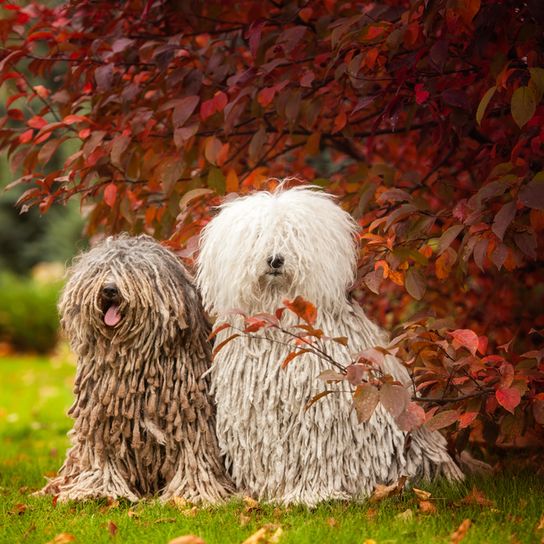
| Alternate Name | - |
| Origin | Hungary |
| Life expectancy | 10 - 13 years |
| Care requirements | low-maintenance |
| Activity level | average to high |
| FCI group | Sheepdogs |
| AKC group | Herding Group |
| KC group | Pastoral Group |
Attitude, character and temperament of the breed
What should be considered when keeping a Komondor?
If you want to buy a Komondor, you should inform yourself beforehand about its origin as a shepherd dog and the associated special features in the attitude.
Suitable external conditions for keeping a Komondor include a fenced-in area, which it is allowed to regard as its own territory.
In addition, it does not belong to the easy to handle breeds, because its character is of a completely different kind. With harshness, injustice or exaggerated dominance you have no chance with it. On the contrary: The Komondor shows when it does not like something.
In order to turn the dog into a pleasant family dog, it needs expert training with a lot of consistency and patience. It is not the most eager to run and prefers to rest during the day, while at night he follows its instincts and patrols the property. Chaining or kenneling is absolutely unsuitable.
Character
Usage
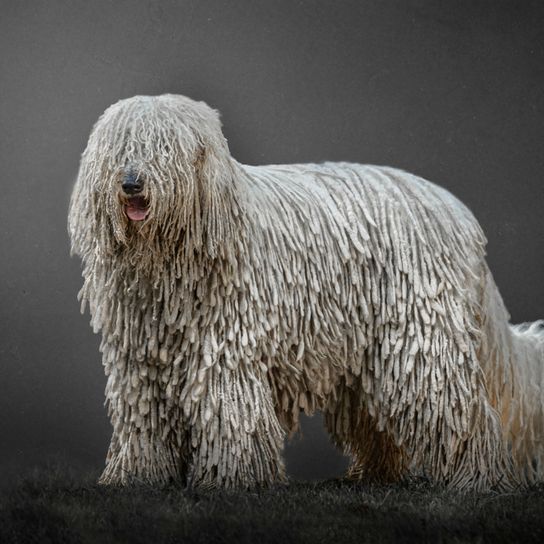

Health and breeding information
What are typical diseases of a Komondor?
Dogs of this breed are considered to be robust in health. This is partly due to the fact that in Komondor breeding from time immemorial most emphasis was placed on the characteristics as a shepherd dog.
Komondor breeding - where, how, what?
Especially with this breed, attention should be paid to a people-oriented and loving upbringing with a responsible Komondor breeder. You should completely avoid buying a Komondor puppy through dubious advertisements.
You can get serious information about Hungarian shepherd dogs and their breeders at the Klub für Ungarische Hirtenhunde e. V., for example.


It has a free and easy gait with a ground covering stride. Its almost square body is covered with matted long hair. The skin underneath is slate grey. The short back with the slightly sloping croup and the strong and broad muscles on the topline and chest are typical of the breed. It carries the broad head above the body. For this the neck forms a 35 degree angle with the horizontal. Its muzzle and lips are black, while the eyes are dark brown in color. The hanging ears show a U- or V-shape. Even when excited, the ears remain droopy. Instead, it raises the otherwise drooping tail to the back line when excited.
Appearance and coat of the Komondor
The "living" hair can become up to nine centimeters long. Fallen hairs push past the sessile ones, forming strings and villi over time.
The hair coat has different lengths at the end, distributed as follows:
- 9 - 11 cm at the lips,
- 10 - 18 cm on the top of the head, eyebrow arch, cheeks, ears, neck and limbs,
- 15 - 22 cm on the chest, shoulder blade area and back,
- 20 - 27 cm on the loins, croup and thighs.
This shaggy coat acts as a climate chamber, protecting against both overheating and cooling.
The coat colour is white to ivory.
How big does the Komondor grow?
Adult males reach a height of 71 - 80 cm. Bitches, on the other hand, are somewhat smaller. They grow to a height of 65 - 70 cm.
How much does a Komondor weigh?
The male colossi weigh between 50 and 60 kg. Their female counterparts weigh 40 - 50 kg.
How old does a Komondor become?
Unlike many large dog breeds, Komondors can live to be over 13 years old.
| Fur length | long |
| Fur | curly |
| Ear shape | Floppy Ear |
| Tail | lang |
| Anatomy | massive |
| Size ♀ | 65 - 70 cm |
| Weight ♀ | 50 - 60 kg |
| Size ♂ | 71 - 80 cm |
| Weight ♂ | 40 - 50 kg |
| Suitable For | - |
Colors




Other large dogs
Useful Articles
You can find articles that might interest you in the dogbible blog to match your favorite breed.
Visit our magazineto stay up to date on dog trends.
To find out more, view our Privacy Policy
Find here the breed that suits you and find out what character traits it has. Here you can also learn more about the origin, size and weight of your favorite breeds.
Matching your favorite breed, you'll find articles that might interest you on the dogbible dog blog.
Apps for dog owners - these 10 apps you should know about
How to recognise good canned food for the dog
Dog sitter wanted - by the hour or for the holidays
